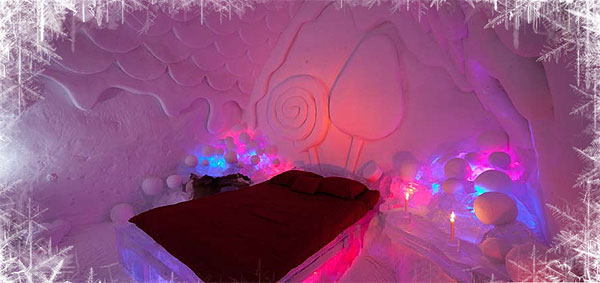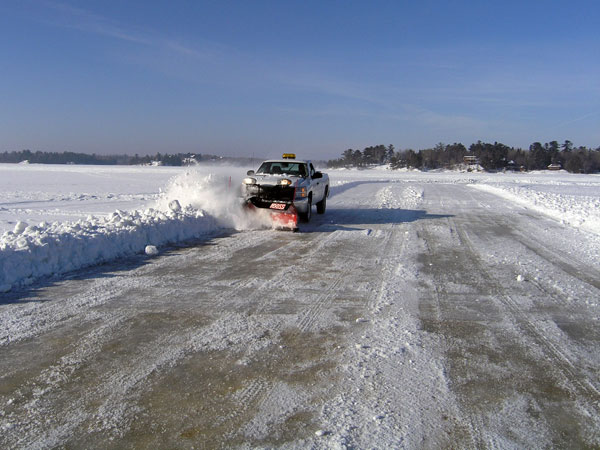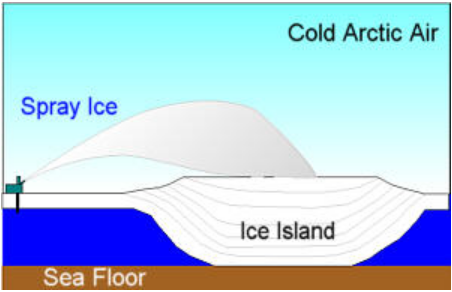Building with Ice
by Andrew Boyd
Today, on the rocks. The University of Houston's College of Engineering presents this series about the machines that make our civilization run, and the people whose ingenuity created them.
Working in the arctic presents special challenges. But it also presents opportunities.
The arctic has two items in abundance: water and cold weather. Together they make ice — a formidable building material. Indigenous populations once built homes of ice. Today, entrepreneurs build expensive seasonal dwellings, like Quebec City's Hôtel de Glace — a stunning, fully functional hotel made of a half million tons of ice. It can be booked through your favorite online travel site.

Ice also makes excellent roads. Vast areas of Canada are wet and swampy in the summer. But in the winter, lakes freeze. Flat and treeless, they're ideal for hauling loads to areas otherwise inaccessible by ground transportation.

One of the more innovative uses of ice comes from the energy industry. Offshore drilling in the arctic is fraught with challenges. In the summer, drilling rigs can be damaged by ice that floats by. Ice breakers and tugs can redirect smaller amounts of ice, but they're helpless when a huge chunk zeroes in on a rig.
In the winter, the water's surface freezes, but that doesn't mean the ice stands still. It continues to shift and grind due to the ocean's currents. Without a strong foundation, drilling platforms risk being crushed by nature's slow, relentless ferocity.
One solution is to build an island on which to rest drilling platforms. When floating ice pushes against enough tons of gravel, the ice loses.
But here's another idea. Instead of gravel, use ice. Start with a sheet of ice, and spray water on its surface. The water freezes, making the ice thicker. As it grows thicker it also grows heavier and settles further into the water. Eventually, it comes firmly to rest on the sea bed. The result? An island of ice.

It's not science fiction. In 1986, Mars Ice Island rose from the ocean. Created in water twenty five feet deep, the island was over two football fields in diameter yet took only forty-six days of spraying to complete. It successfully supported a drilling rig. Other ice islands were built. Patents were filed. The idea worked.
Unlike gravel, ice melts. For exploratory drilling platforms this can prove beneficial. Ice islands are built as the late summer water starts to freeze. Drilling proceeds throughout the winter, and come the following summer the island returns to the sea. To be used as permanent foundations, ice islands need to be built in colder areas or made thick enough to survive the summer.
Ingenuity comes in many forms. It can be devilishly complex or as straightforward as freezing water. Some of the world's best ideas come not from battling nature, but embracing what she provides.
I'm Andy Boyd at the University of Houston, where we're interested in the way inventive minds work.
Notes and references:
A. Barker and G. W. Timco. 2004. 'Sliding Resistance of Grounded Spray Ice Islands.' Proceedings of the IAHR, vol.2, 208-216.
Construction and Maintenance of Ice Islands. From the Website of the Bureau of Ocean Energy Management, Regulation and Enforcement.
Ice Island Study. From the Website of the Bureau of Ocean Energy Management, Regulation and Enforcemen.
Special thanks to Guy Vachon for bringing ice islands to my attention and for reviewing the essay.
The picture of the Hôtel de Glace is from the hotel's Website. All pictures are from Wikimedia Commons or U.S. government Websites.